Tags
AKC, aphis, basenji, breeders, commercial breeders, fanconi, Google, nextdaypets, orthopedic foundation for animals, puppies, puppy mills, puppyfind, shiba inu, usda
Well, it finally happened that a reader contacted The House of Two Bows to ask where they can get a Shiba puppy. So after waiting in the wings for weeks, it’s about time I drag out this follow-up to my puppy mill post.
I struggled with redundancy. What advice could I offer that hasn’t already been said a million times by others, and much more succinctly? Numerous versions of “The List” are already in circulation, even breed-specific ones (here is a Shiba-specific one that I can get behind; here is a descriptive list for Basenjis). Domestic puppy mills thrive while the USDA wages spurious battles against an imagined flood of foreign imports. This continues every day, so I may as well toss my tiny little wrench into this perpetual motion machine…
What follows is going to be tl;dr for most folks. You can skip my detailed commentary and jump to the bottom for a summary of useful links provided in this entry, if you prefer.
So say you have your heart set on a Shiba Inu or a Basenji puppy (my example breeds here for obvious personal reasons, though you can generalize). However, you’re starting from zero. What do you do?

29 April 2005. Puppies are irresistibly cute, even when they don’t fit breed standards or come from unethical kennels.
Let’s assume that most of us (or anyone who might be reading this) would take the first step by Googling the obvious — “shiba inu puppies for sale,” or “shiba puppy + [your state or region of residence]”, or “O’ Great Google Moogle, where can I buy a shiba inu puppy?” (since it seems common to address the search engine with a full sentence query as if it were a cognizant oracle).
Babam. Over a million results in less than a second. Three cheers for modern technology that delivers the whole world to your fingertips, in the comfort of your own home! But how do you process all this information?
Let’s pretend for the sake of this hypothetical search that you have no idea of any breeder’s reputation or practices and you have to work with what you find.
We’ll take one of the first sites to pop up and go from there. The steps below detail some ways that anyone can use the internet to help determine if you’re dealing with a decent breeder. There is no set order, nor will every step apply to every situation. But I hope that this demonstration will be specific and instructive enough to show that potential puppy buyers have many resources at their disposal. It would be a pity for you to ignore them, especially if you want to claim that you’ve done your research.
Step one: locate a puppy for sale.
Aha! Looky here! [Note: every screenshot below can be biggified with a click]
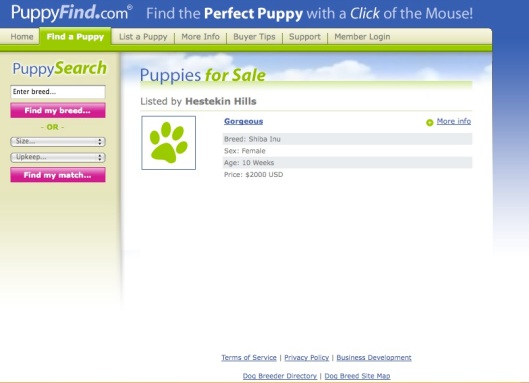
This breeder has a 10-week-old Shiba female named “Gorgeous” listed for sale. Sadly, there is no picture, nor is there any information about the puppy’s parents, the seller’s location, the puppy’s personality, or anything. Seems like this is the least she could offer if she’s asking $2000 for a pup. But maybe you’re lured by something like a promise of a beautiful and well-tempered puppy, or a proud declaration that this breeder has been in business for sooo many years, or an offer of pedigree papers or health guarantee or some other lucrative selling point. Perhaps you want to find out more.
Puppyfind and similar broker sites don’t have the puppies on hand, but they connect you to those who do. They give you full access to the breeder’s information if you register (and sometimes you have to pay). However, you realize you can easily bypass the fees if you contact the kennel directly. So you proceed to…
Step two: Identify and learn more about the puppy’s kennel.
Hey, look, the breeder you located on Puppyfind has their own website! Much more convenient! But how are you to scale this wall of text?
This breeder has a large number of links about the legitimacy of the AKC, a lengthy adoption purchase agreement (which is filled with some interesting contradictions that could make up an annotated reading on its own), tips on finding a good breeder, rescue, and so, so much more. Given this bounty of information, you feel like you’re dealing with a breeder who really knows her stuff, cares about her puppies, and loves dogs like you do.
However, it is not always the quantity of information offered that counts, but what is being said and how it maps onto the breeder’s practices. Don’t forget, the webpage is there to advertise the kennel — and they are, naturally, looking out for their own interests (and profits, where applicable). So as a smart consumer, what’s your next move?
Step three: Research the breeder.
This might be a relatively “new” step with altered stakes, enabled by the power of internet archives, but it remains a basic task of the puppy buyer. Researching the breeder is just as important as researching the breed itself. There are a few kennels where a brilliant, usually self-appraised reputation or flashy website masks long trails of bad business practices and heartbreak that would be easily uncovered if everyone would just GTFB.
So Google the kennel name. Google the breeder’s name. Google her e-mail address and phone number. In the cases of puppy brokers, e-mails and phone numbers have often been traced to long trails of online ads that infest across multiple breeds.
This useful post about how to use Google to your advantage will explain further.
Step four: Verify health tests on the public Orthopedic Foundation for Animals database.
One informational link provided by this breeder is a detailed breakdown of “Just why do purebred puppies from a reputable breeder cost so much?” As she charges $2000 for a pet quality Shiba, this is how she justifies her costs. She reminds us,
Health and temperament tests are done to determine if my dogs are even worthy of being bred. Tests are very expensive, but well worth the price of increasing the chances for the puppies to live a longer healthy active life. We do provide a written health guarantee for our puppies, so it is very important that we are breeding healthy dogs to get healthy puppies. We do tests like having hips, elbows, eyes and hearts checked which run about $200.00 per dog. If any of my dogs are questionable as to my findings or my vets findings, we would then have to send the reports and films into OFA or the GDC for clarity and that adds another $50.00 or more per dog.
Remember, if anyone had ‘failed’ any of these tests, they would have been spayed or neutered, and just lived their life as a beloved pet. Also, if that had happened, I would still be out my initial above spent money. A breeder is always gambling with any money spent.
– from our hypothetical breeder’s website (emphasis and links added)
If you are not familiar with the mentioned acronyms, I encourage you to click on the links embedded above. Briefly, the Institute for Genetic Disease Control (GDC) and the Orthopedic Foundation for Animals (OFA) are legitimate, non-profit institutions that have worked with responsible breeders and researchers to test and track canine (and feline) genetic diseases in their open, publicly accessible registries. These health tests are not the same thing as “vet checks” because your average vet does not have the equipment or specialization to conduct, interpret, and register these tests; rather, specimens usually need to be sent off-site to specifically approved labs.
I agree with this argument that genetic testing is essential to minimize the risk of producing unhealthy pets. But I do want to verify that she walks her own talk. This a very simple step that anybody can take through the searchable OFA database at http://offa.org.
First, we need the names of the puppy’s parents.
Oh, wait. Their registered names are not provided. No names are given at all, just a personality-less label of “dam” and “sire.”
No matter! You can search the OFA database by partial name, and narrow your results by breed if necessary. If you search by kennel name, this might bring up a LOT of results that you’ll then need to wade through, but sometimes also reveals just how seriously a kennel takes health testing. For example, is every breeding adult thoroughly tested before breeding, or only sporadically when something arises? Sometimes searching by kennel name will also show where a kennel has been as far as breed history, though you’ll want to be careful that you’re not conflating multiple, separate breeders especially if the kennel name consists of fairly common terms like “rock” or “ice” or something.
Back to our hypothetical search, our results for this kennel are as follows…
Though she doesn’t mention it on her Shiba website, we find that she’s into Basenjis and Poodles as well. While it is not a bad thing in and of itself for your breeder to have a history with multiple breeds (particularly if they are not simultaneous ventures), what is somewhat incriminating about this result is that there is only a single entry for our hypothetical breed of interest, the Shiba Inu.
One Shiba was tested for one set of hips, when the dog was about 5 years old in 2005. So unless this now 11-year-old dog is the sire (and the pictures of her shiba studs allow us to determine that he’s not), this breeder appears to be charging premium rates for a puppy that has no record of health testing. Though she has a whole page arguing that the high price of a pet quality puppy is due to her “personal experience” with “very expensive” tests, why does she offer no evidence that she has completed the most basic tests to demonstrate the genetic integrity of her breeding dogs? What gives?
Something doesn’t quite add up…
Now, there are a couple of reasons that health tests may not be found in the OFA. With most of the tests, breeders elect to submit their results, and they also have the option of not publishing aberrant results. So it is possible that the breeder still took the trouble to test, but decided to keep their results out of the public database for some reason.
As a puppy buyer, it is in your best interest to regard an absence of public records as if the testing was never done, which is the most likely reason that the results are not found. If you don’t want to jump to conclusions, ask the breeder for the direct link that provides positive proof of testing, as it’s also possible that the dogs are listed under something other than their registered names or there’s some compelling reason that the results haven’t been submitted (although I would also wonder why they have chosen to withhold information that would help form a more complete picture of the overall health of the breed).
However, some tests MUST be published, even if they reveal less than desirable results. DNA tests for Fanconi Syndrome, a hereditary, recessive kidney disease that is most relevant to the Basenji breed, are always published, so if the results are not there, the testing was never done. This is an incurable disease that can potentially be eradicated with selective breeding, but can also be fatal if dogs are bred with the right combination of ignorance and misfortune, so the results are too important to hide.
Thus, with these results, we can also see that this breeder had a Basenji bitch that is a probable carrier of Fanconi, who was bred to another carrier to produce a Fanconi affected pup in January 2009, which was well after the DNA linkage test for Fanconi was made available. Note that the Fanconi affected pup is unnamed in the database, so she won’t appear if you search the OFA database for this breeder’s kennel name. Had all her breeding dogs been tested before breeding, and had she been more careful about holding off on litters until the results were in, this tragedy — which is not an isolated incidence — could have been prevented.
What was all that talk about how these onerous, expensive health tests help justify her outrageous prices for a puppy? If this was what you found after you did your research, would you walk away? or do you continue to give the seller the benefit of the doubt and do some more research?
Step five: Cross-reference the breeder’s name, kennel name, and address with USDA registration databases
For a number of reasons that I and plenty of other people have tried to pound home, USDA licensed dog breeders are bad news. The more that this connection is made public, the less eager these breeders will be to advertise their certification as if it was a badge of honor, as this breeder does. So the more it will be necessary for puppy buyers to take this extra check and verify for themselves that they’re not dealing with Class A/B professional puppy peddlers.
For the record, state licensing does not mean the same thing as USDA licensing. As kennel licensing requirements vary from state to state, and not all of them indicate wholesale dog brokering, I am not able to speak on that level. But I can tell you that the lives of these dogs mean very little in the eyes of federal law. Given that, here are two lists of USDA licensed breeders and brokers from the USDA’s Animal and Plant Health Inspection Services (APHIS) site:
Class A breeders
Class B breeders and brokers
On her website, this breeder claims that she is not required to be USDA licensed, she just prefers it since she feels that “any facility holding animals for any purpose should be USDA (federal) licensed, with no exceptions,” though she doesn’t really explain her rationale. As of my latest search, you can find her name on the USDA list of Class B breeders. You are required to have a B license if you are brokering animals that you did not breed yourself, an option which opens the pathway for acquiring dogs — many, many dogs — from questionable sources.
Since she also runs an “Adoption Center” for which she claims she has not chosen to file 501(C)(3) status so she can willfully continue paying taxes like the responsible state citizen she portrays herself to be, one can see where such USDA licensing may actually be required. I also don’t know of any “adoption center” that contractually obligates its adoptees to be on NuVet supplements for their whole life, but that’s yet another diversion…
Anyway, just how many dogs are we talking about here? This is when it’s handy to know the online, public, searchable database for APHIS inspection reports, accessible here at http://acissearch.aphis.usda.gov/LPASearch/faces/CustomerSearch.jspx
Huh. Well, that’s interesting. Her license is currently… cancelled. Note that the USDA database does not distinguish between a license that they cancelled or a license that was not renewed. At this point, I would click on the tab for Inspection Information:
And click the DETAILS on a recent report to unfold the results within the search window:
The database has a useful feature that shows how many animals were on the property at the time of inspection. In this case, the above screenshot reveals that there were 129 adult dogs, 14 puppies, and 2 bears (!) on the property at the time of the last inspection in 2009. Inspection reports are also downloadable as .pdf files, like this. So you can also peruse the details of the non-compliant conditions in which these dogs were unfortunate enough to be found living in, and marvel at the flat tone of reproach that the USDA takes in documenting these violations.
For example, on the date of this inspection, spilled, damp, molding food was found in the main food storage area, a problem which affected 68 animals (dogs). The USDA inspector cited this and entered the comment, “This does not protect the health and well being of the animals.”
I know this is standard boilerplate that all inspectors include in their reports, which are meant to be bureaucratic documentation and not impassioned works of literary merit. But every time I read this mechanical, generic line, I want to scream, No shit, Sherlock.
My point here is that just because this operation is legal, it doesn’t necessarily clear my test of conscience. Certainly, there is no magical dog-to-person ratio that marks the threshold between a “responsible” breeder and a “puppy mill.” Yet I know the amount of energy that my partner and I have to put into giving our two dogs a quality of life that I consider acceptable — and these are two, non-breeding, fully mature dogs. After a point, feats of lunacy would be required to justify the quality of life afforded to dogs at some of these commercial breeding facilities.
Step Six: Consult with other breed enthusiasts.
Ideally, this step would be the first you take. However, I’m slotting it further down in our hypothetical search in full awareness that we don’t all find our puppies under “ideal” circumstances. Perhaps you get to a point where you’ve done all the preliminary research on your own, you’ve gone through all the steps above, and you’re not finding anything that makes you swing hard either in favor of or against a specific breeder. What if you can’t seem to uncover any info, either positive or negative, on a breeder that you’re considering?
Again, Google is your friend. Use this tool to help you locate the parent club for your breed (like the National Shiba Club of America or Basenji Club of America), and/or a local breed-specific club (like the Basenji Club of Northern California or Shiba Fanciers of Northern California). See if they have contact information for breeder referrals or an education and outreach liaison. The best parent club websites are open and generous with their riches (like breed-specific health information), and that knowledge is there for anyone interested in the breed, not just for show dogs or club members.
Find a breed-specific forum for what you’re interested in. I happen to have benefited immensely from two very active message forums for my favored breeds, the Shiba Inu Forum and Basenji Forum. You don’t need to wait until you have your puppy in order to join; many have joined even during the research and shopping phases. If you ask forum members to rate a breeder on either of these sites, you will usually get feedback that is precise, honest, and reasoned. Heed the advice of others who have seen more than you, and keep an open mind, especially if it comes to criticism of a kennel that you’ve all but married.
I have sometimes seen individuals take criticism of “their” breeder way too personally. But the object of scrutiny really isn’t the puppy buyer — that’s the breeder’s job. Where you got your puppy has nothing to do with your potential as a good dog owner, unless you make an ass of yourself by ignoring the cold, hard, documented facts and stomping all over the bigger picture of a breed you claim to love. I start by presuming innocence on the part of the consumer, but also on the part of the puppies, who were willed into existence by a breeder with an agenda.
Whether that agenda supports individual conceit, delusions, and financial self-preservation, or accounts for the long-term and overall welfare of the breed makes a huge difference.
Returning to our hypothetical search, and reviewing what I’ve laid out here, I am comfortable concluding that this is not a breeder whose operation I would choose to support. Yes, I’ve reached a judgment sitting at my computer without bothering to call or e-mail or visit the breeder. Is that fair? From the perspective of a consumer who’s trying to make the most of my own time and resources, I think so. Why should I be the one to bend over backwards to make excuses for a breeder who doesn’t pass muster, just because they happen to have a single “gorgeous” puppy? Any rational buyer would have stopped this search and moved on long ago. But for the sake of finishing out this hypothetical search, I’ll move onto my final step.
Step Seven: Map out directions to the breeder’s kennel, and GO THERE.
Ultimately, even though there are a number of valuable tools to be found online, the amount of research you can do from the comfort of your own home will always be limited when you’re talking about living creatures who can’t be converted into bytes and pixels. Buying a puppy online and having him shipped directly to your nearest airport is certainly convenient, but I cannot think of any situation where this is preferable to an in-person visit.
I’m pretty far from this kennel in our hypothetical search, but Google Maps puts the distance into perspective. It would take about 32 hours to get from here to there. Realistically, no sane person would attempt that in one continuous drive. You’d have to make a road trip of it and there would be more planning involved, but honestly, what does this trip of 5 or 6 days matter when you’re talking about 5000 days or more in the lifetime of a well bred, genetically sound, happily raised pet?
So go out there and see the facility for yourself — with an appointment, of course, which your breeder should be more than happy to schedule. Meet the people behind the operation, family and “staff” included. Meet the parents of your puppy (if both are on the premises, which may not always be the case usually for the sire — and that’s fine). Meet all the other dogs that the breeder keeps to get an idea of their quality of life and the standard of care your breeder strives to achieve. See where they sleep and defecate (hopefully it’s not the same pen). Ask your breeder to physically demonstrate how she handles things like grooming, nail clipping, feeding, monitoring rough puppy play and other social interactions, etc.
And try to determine for yourself, with your best people judgment, if this is a breeder whom you’re comfortable communicating with for the rest of your pup’s natural life. Shiba and basenji puppies are hard, and you’ll need all the allies you can get! If you can start off on the right foot even before your puppy is born, you’ll have that much more energy to devote to the love of your dog.

8 June 2010. Bowdu and Bowpi thank you for reading this very long entry.
—
Here’s a summary of websites and links for those who didn’t feel like reading everything, with a couple others thrown in for good measure:
Useless sites:
These sites are either far too commercial or generalized in nature, and therefore cannot provide the best guidance or information. While I don’t believe that all breeders who advertise online are automatically “bad,” space and formatting constraints imposed on some sites means that every single one is worthy of further investigation — the very reason I felt compelled to write this entry in the first place.
- Puppyfind.com
~ charges fees for buyers and sellers to contact each other, poor breed-specific guidance - K9stud.com, Nextdaypets.com, Terrificpets.com, Animaroo.com, PurebredBreeders.com, etc.
~ ditto above - eBay Classifieds / Kijiji
~ very disappointing to me that eBay, which once enforced a policy against animal sales on its main auction site, decided to foster another venue for this to continue unabated; after all, even Craigslist has some checks in place to monitor against the most flagrant animal sales! - Yahoo Answers
~ the quality of questions and advice given on this forum frequently makes me despair… please seek your expert advice elsewhere
Public Databases and links of general use:
- Orthopedic Foundation for Animals: http://www.offa.org
~ a publicly searchable database that SHOULD include information for your puppy’s dam and sire! - AKC reports: http://www.akc.org/store/reports/index.cfm
~ reports must be purchased for an exorbitant fee that impedes true research, but some limited information is available for free - PupQuest: http://pupquest.org/index.php
~ educational portal aimed at teaching the public to be “puppy-source savvy” - USDA Class A Certification holders: http://www.aphis.usda.gov/animal_welfare/efoia/downloads/reports/A_cert_holders.txt
- USDA Class B Certification holders: http://www.aphis.usda.gov/animal_welfare/efoia/downloads/reports/B_cert_holders.txt
- APHIS database of USDA licensed kennel inspection reports: http://acissearch.aphis.usda.gov/LPASearch/faces/CustomerSearch.jspx
- Top Ten Questions Prospective Purebred Pet Owners Should Ask Breeders Before Buying: http://www.petmd.com/blogs/fullyvetted/2011/may/top_ten_questions_for_purebred_breeders
- Buying a Puppy? Google is Your Friend: http://desertwindhounds.blogspot.com/2011/02/buying-puppy-google-is-your-friend.html
Breed specific resources:
Shiba Inu:
- The Shiba Inu Forum: http://www.shibainuforum.org
~ free registration required to view some protected threads - Dogster Shiba Inu Forum: http://www.dogster.com/forums/shiba_inu
~ free and open to all - Shiba Inu Puppycam Forum: http://puppycam.yuku.com
~ free registration required to participate - National Shiba Club of America: http://www.shibas.org
- Shiba Fanciers of Northern California: http://www.sfnc.org
~ an example of a regional breed club — look for one in your area - The Misanthropic Shiba: http://shibainus.ca/chapter-00-the-misanthropic-shiba/
~ before purchasing, pay close attention to the chapter on Shiba Inu Breeders
Basenji:
- The Basenji Forum: http://www.basenjiforums.com
~ registration is free - The Basenji Companions: http://basenjicompanions.org/board.html
~ requires annual membership to participate in active E-mail list - Basenji Rescue and Transport (BRAT) Chat List: http://www.basenjirescue.org/
~ general discussion list open to the wide network of basenji rescue volunteers – complete a volunteer application for an invitation to join - Basenji Club of America: http://www.basenji.org
- Basenji Club of Northern California: http://www.norcalbasenjis.org/
~ example of a regional breed club — look for one in your area - Basenji Pedigree Search: http://www.pedigrees.zandebasenjis.com/
~ public database of Basenji pedigrees provided by Sally Wallis and Zande Basenjis, which includes limited health information - Buying a Basenji: http://kineticbasenjis.tripod.com/Information/Buying_a_Basenji.html
One final suggestion: please consider rescue, even if you’re looking specifically for a puppy. Within this past month, litters of both Shiba and Basenji puppies (less than 4 months old) became available through rescue — and this is to say nothing of adorable mixes that are available every single day. The House of Two Bows keeps a list of breed-specific and all-breed rescues on our blogroll. Consult the sidebar to further expand your options.

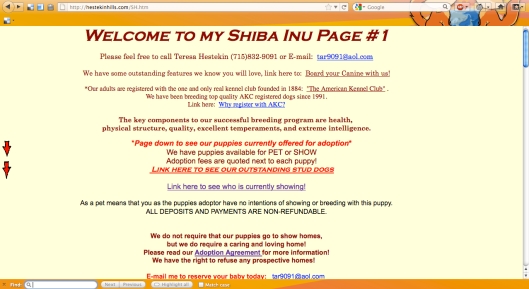
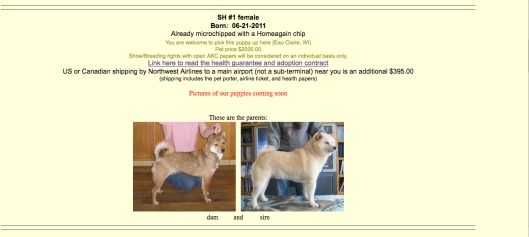


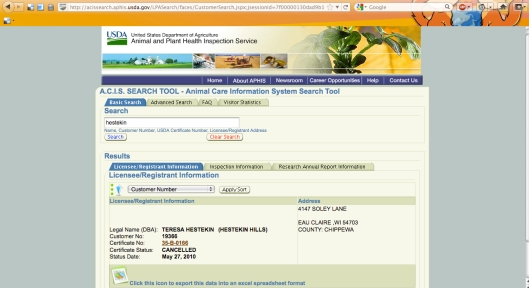
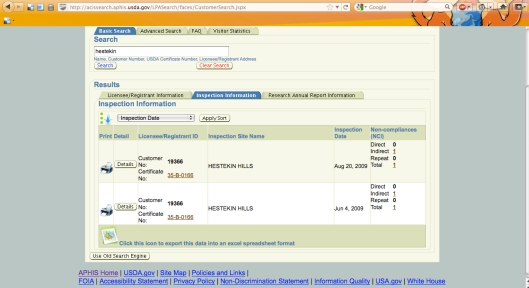



so well done! we’re adding this to our adoption resources post because it really is a great, in-depth resource that shows just how much homework there is to be done to be responsible (and safe) in buying a puppy from a reputable breeder.
thanks for taking the time to share this!
Excellent post. Lots of good information for the uninitiated.
Sadly, puppies are too often purchased on impulse and the most convenient source of such puppies are unscrupulous pet shops and backyard breeders. I think more should be done to educate potential dog owners about the responsibilities involved in not only caring for a canine companion but also searching for one. This post is an excellent start!
A fabulous and thorough post, thank you for doing this.
That last picture is Penny, right? I really fell for her at the Shiba picnic this past June, and was elated when we heard from Red Young that she got adopted! And I really enjoyed meeting you and the Bows too. BTW, your managing two dogs and a good camera in pouring rain was very impressive. 🙂
You have a good eye — yup, that’s Penny! And that’s awesome that she was adopted so quickly. Another example of a sweet puppy that was available through rescue to lucky and tenacious adopters!
Fantastic write-up!
Thanks so much for listing PupQuest.org as a useful, not useless web site. Your post is great!
PupQuest’s motto is NEVER buy a puppy sight unseen. If only consumers read your post and PupQuest and followed our advice, bad breeders, shady “rescues” and puppy mills would all go out of business!!! One can dream….
I love PupQuest! Thanks for putting it together and keeping it maintained. It’s well-designed, contains lots of useful links and documentation, and offers balanced, clear information without being graphic or sensationalistic. Please keep up the good work.